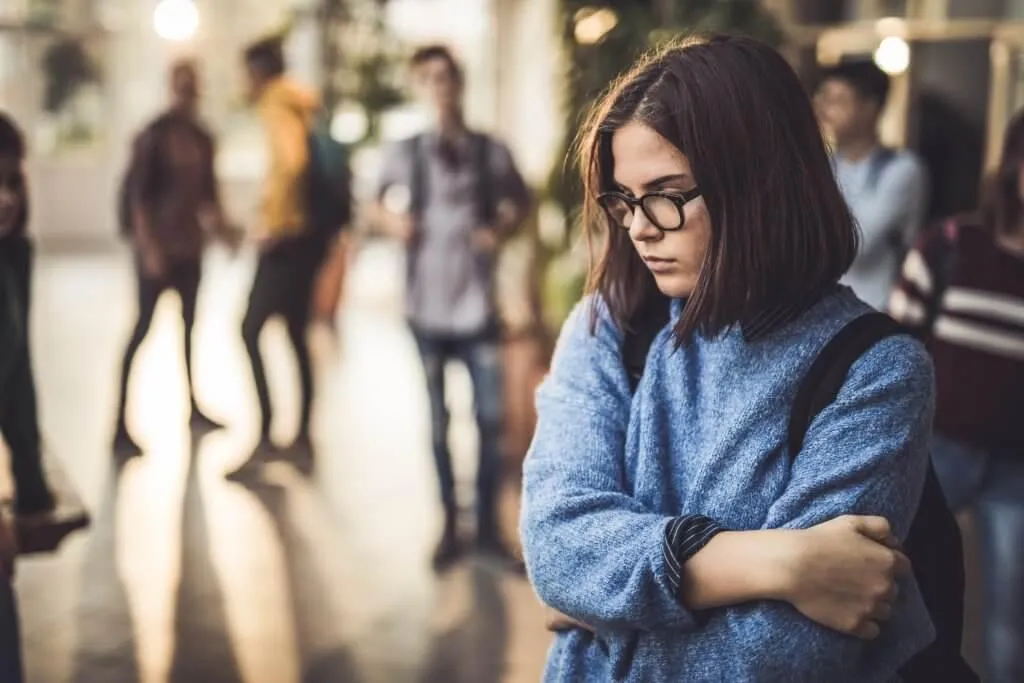
Your Brain Learns From Rejection
Your Brain Learns from Rejection: New Research That Changes How We Approach Belonging in Schools
Why understanding the neuroscience of rejection can transform how we create inclusive classrooms and support students through social pain
Picture this: Emma walks into the student lounge and overhears friends discussing weekend plans that clearly didn't include her. Or Jamie discovers their usual lunch group has moved tables without telling them. These moments sting—and according to groundbreaking new research, our brains process this social rejection using the same neural pathways as physical pain.
But here's what's fascinating: rejection isn't just painful. It's educational.
Recent neuroscience research reveals that our brains don't just react to social rejection—they learn from it, constantly updating our internal maps of who values us and how to navigate future relationships. For educators working with restorative practices, this research offers profound insights into how we can better support students through moments of social disconnection and help build more inclusive school communities.
When Rejection Becomes a Teacher
The research, published in the Proceedings of the National Academy of Sciences shows that our brains use rejection as a learning signal. When we experience social exclusion, our anterior cingulate cortex—the same brain region that processes physical pain—doesn't just register hurt. It helps us recalibrate our understanding of our social worth and adjust our future relationship decisions.
Think about Marcus, a Year 9 student who wasn't invited to a classmate's party. Traditional approaches might focus on either dismissing his feelings ("it's not a big deal") or immediately fixing the situation. But understanding rejection as a learning experience opens up different possibilities.
Marcus's brain is doing sophisticated work: processing not just the disappointment but also updating his understanding of where he stands with his peers. This neural activity isn't pathological—it's adaptive. His brain is asking: "What does this tell me about this relationship? How should I approach similar situations in the future?"
The Two Learning Systems at Work
The research identified two distinct but interconnected learning systems:
System 1: Relational Value Tracking This system monitors how much others value us. When students experience rejection, their brains aren't just registering pain—they're recalculating their perceived social worth within that relationship.
System 2: Social Reward Processing This system responds to positive social experiences—smiles, inclusion, praise—activating the brain's reward centres and encouraging us to seek more such connections.
Both systems work together to help us navigate the complex social landscape of school life.
This research validates what restorative practitioners have long understood: relationships are central to wellbeing and learning. But it also offers new insights into how we can support students more effectively.
Reframing Rejection as Information, Not Injury
When Zara complains that her group partners "always ignore her ideas," we can help her understand that her brain is processing valuable social information. Instead of rushing to fix or dismiss, we can explore: What is this experience teaching her about group dynamics? How might she use this information to advocate for herself more effectively?
This doesn't mean minimizing her hurt—pain is real and needs acknowledgment. But it means recognizing that her brain is also doing adaptive work, learning about relationships and social navigation.
Understanding the Complexity of Social Feedback
The research showed that people can feel good about being included even when they know they weren't the first choice, and disappointed about exclusion even when they understand the reasons. This mirrors school experiences perfectly.
Consider Alex, who gets picked for the basketball team but knows he was the last choice. His brain is processing both the reward of inclusion AND the information about his relative standing. A restorative approach helps him make sense of both pieces: "How does it feel to make the team? What do you think this tells you about your skills? How might you use this information moving forward?"
Supporting Healthy Relationship Navigation
When students struggle with social situations, we can help them distinguish between:
Circumstantial rejection (like Marcus not being invited to a small gathering due to space constraints)
Relational rejection (like being deliberately excluded from a group)
Understanding this distinction helps students develop more nuanced social skills and prevents them from catastrophizing normal social limitations.
Practical Applications at School
When a student experiences social rejection:
· 💔 Acknowledge the hurt: "That sounds really disappointing, I’m sorry this has happened."
· 🧠 Explore the learning: "What do you think this experience is telling you about this relationship? What information might your brain be processing?"
· 💎 Distinguish context from worth: "Sometimes people can't include everyone due to circumstances, even when they value the person. How might we figure out which situation this is?"
· ↪️ Plan forward: "Based on what you're learning, how might you approach similar situations differently? What relationships do you want to invest more energy in?"
Building Social Learning Opportunities:
Circle discussions about social navigation: Use regular circles to discuss how students handle inclusion, exclusion, and changing friendships. Use prompts such as, "Share about a time you felt left out. What did that experience teach you about yourself or relationships? How did you use that learning moving forward?"
Role-play social scenarios: Help students practice responding to rejection in healthy ways.
Normalize social learning: Talk openly about how everyone's brain learns from social experiences and validate the associated emotions.
For Restorative Conversations
When navigating peer conflicts involving rejection or exclusion in addition to the standard restorative questions of:
"How did that make you feel?"
"What do you need to feel better?"
You could also explore:
"What do you think your brain learned from this experience?"
"How has this changed how you see this relationship?"
"What information is this giving you about how to move forward?"
Recognizing When Learning Systems Struggle
The research also illuminates when these learning systems might need extra support. Students who struggle with:
Emotional regulation after rejection may need help distinguishing between circumstantial and relational exclusion
Social withdrawal might benefit from support in noticing and responding to positive social rewards
Volatile relationships could use coaching in interpreting mixed social signals
These aren't character flaws—they're learning system variations that respond well to targeted support.
Building Emotionally Responsive Schools
Understanding rejection as a learning process has implications beyond individual support. It calls us to create school cultures that:
Normalize Social Learning
Rather than treating peer conflicts as problems to solve quickly, we can frame them as opportunities for social skill development. This doesn't mean allowing harm but recognizing that learning to navigate rejection and inclusion is part of healthy development.
Provide Multiple Pathways to Belonging
Knowing that students' brains are constantly tracking social value, we can intentionally create diverse opportunities for positive social experiences—from circle work to academic partnerships to interest-based groups to peer support roles.
Teach Social Navigation Explicitly
Just as we teach academic skills, we can teach students how to interpret social feedback, handle rejection resiliently, and seek out positive social connections.
Moving Forward: Questions for Reflection
As educators committed to restorative practices, this research invites us to consider:
How might we help students develop more sophisticated ways of interpreting social experiences?
What would change if we viewed peer conflicts as opportunities for social learning rather than problems to solve?
How can we create classroom environments that provide rich, positive social feedback while also teaching resilience around rejection?
What would it look like to explicitly teach students about how their brains learn from social experiences?
The Bigger Picture
This research deepens our understanding of why relationships matter so profoundly in education. When we recognize that students' brains are constantly learning from every social interaction, we move beyond simply managing behaviour to actively supporting the social learning that helps students thrive in relationship with others.
What social learning opportunities exist in your classroom this week? How might you help students see rejection not as rejection of their worth, but as information that can guide them toward stronger, more authentic connections?
